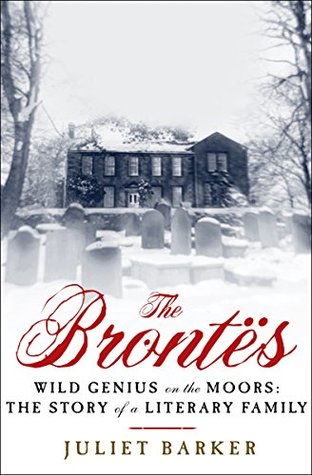More on this book
Kindle Notes & Highlights
Read between
February 17, 2018 - June 7, 2019
peace on 7 July 1814
John Buckworth was absent in a fruitless search to regain his health,
Reverend Thomas Atkinson, perpetual curate of Thornton,
Though he loved the countryside around Hartshead and Clifton,
Thornton offered him the prospect of deeper involvement in a much larger parish and a considerably increased income as the living was worth £140 a year.
Thomas Atkinson was a nephew of Hammond Roberson,
March 1815, the arrangements had been made and Patrick had been nominated and appointed by Crosse as the new perpetual curate of Thornton.
After what had seemed like the ending of decades of warfare with the abdication of Napoleon and the Peace of Paris, the whole of Europe was once again thrown into turmoil by news of Napoleon’s escape from Elba.
16 June 1815, Wellington fought an indecisive battle at Quatre-Bras against the French commanded by Marshal Ney;
18 June would be celebrated as ‘Waterloo Day’
The Old Bell Chapel, as it was known, lay at the Bradford
the bad man also carries his mind with him, but it is a source of unruly desires, vain expectation, heavy disappointment, and keen remorse.
Education is the key to moral and social improvement in the story and, as we shall see, in life as well as in fiction, Patrick, his wife and his children were passionately committed to this belief.
On 21 April, Maria gave birth to her third daughter who, as had now become established practice, was named after another Branwell, Maria’s younger sister, Charlotte.
Charlotte Brontë was baptized by William Morgan in Thornton on Saturday, 29 June; her godfather was the former incumbent, Frances Walker’s fiancé, Thomas Atkinson,
The obsessions of the school with cropping hair short, forbidding any sort of personal adornment and meting out (by today’s standards) barbaric punishments for relatively minor offences, are strongly reminiscent of Lowood School in Jane Eyre.38
The girl who was selected for the Brontës was Nancy Garrs,
The first of remarkably few servants employed by the Brontës, she, like her successors, was devoted to them and remained a loyal friend long after she had left their service.
latest confinement, as this did not occur till the end of June, by which time
52 In the early hours of the morning of 26 June 1817, the latest Brontë arrived on the scene. For Maria, and more especially for Patrick, this was a particularly welcome moment, for this child was the long-awaited and much-wished-for son.
November, the much-loved Princess Charlotte of Wales, only daughter of the Prince Regent, died giving birth to a stillborn son.
The new year, 1818, was marked throughout the Bradford district
with the spectacular Bishop Blaize festivities.
he campaigned vigorously to get the criminal law reformed and its savagery moderated.
Thursday, 20 August; his wife, Jane, and her parents, the Fennells, are said to have been the baby’s godparents and one of them presented the baby with a delicate white china christening mug with her name spelt out in gilt lettering around it, ‘Emily Jane Bronte’.
the complete renovation of the Old Bell Chapel, which Patrick began in the late autumn of 1818.
the death of Queen Charlotte, wife of George III, on 17 November,
the parish of Cross Stone, which lay between Hebden Bridge and Todmorden.
The church at Haworth was a medieval foundation and, like Thornton, was originally a chapel-of-ease built to provide services for the remoter districts and manned by a perpetual curate who remained subject to Bradford.
When Elizabeth I re-established the Protestant Church in England, after Queen Mary’s attempt to restore Catholicism,
While the vicar of Bradford claimed the right to nominate and appoint a minister at Haworth, the church trustees could make or break that appointment by declining to pay his salary.
On Whit Sunday, one of the most important festivals
personal contact: Stephen Taylor, a gentleman farmer living at the Manor House in Stanbury,
They had nothing against him personally, but would resist his appointment to the bitter end if it was
forced upon them by the vicar of Bradford.
The latter offered to allow him to hold both Thornton and Haworth until the matter was satisfactorily settled,
he had written to both the vicar of Bradford and the Archbishop of York to resign Haworth.95
The summer of 1819
had added bad harvests to industrial depression, leading to political discontent which had manifested itself in increasingly violent agitation for reform.
the Radical, Henry Hunt;
‘Manchester Massacre’ or the ‘Battle of Peterloo’ in which one man was killed and forty were wounded.
Things cannot have gone too well, for eleven days later his formal resignation was finally accepted, and Patrick was at last free to resume his ministry at Thornton.
The little house in Market Street must have been bursting at the seams with six children, their parents and two young servants all living under one roof.
On 29 January, an era had ended with the death of George III; the only king most of his subjects, including the Brontës, had ever known, he had been on the throne of Great Britain and Ireland since 1760.
proclaimed on 5 February, was George IV
The country was also in a period of deep depression, particularly in the late winter of 1820,
On 5 March, the extended family and their friends gathered for the last time in the Old Bell Chapel at Thornton to witness the baptism of Anne Brontë.
between 10 and 20 April, the contents of the parsonage on Market Street were packed on two flat wagons, sent over from Stanbury for the purpose by Stephen Taylor, and the Brontës set out for what was to be their final
For Mrs Gaskell the Brontës’ Haworth is still the Haworth of the 1700s where life is ‘nasty, brutish and short’.5
the period of Patrick Brontës ministry there, from 1820 to 1861,


